Do You Need an Undershirt Under a White Dress Shirt
When the 25 Tips to Dress More Elegantly were published, a lively discussion emerged around whether or not to wear an undershirt. Therefore, today's post is dedicated to undershirts. Starting with the historical evolution of underwear, it continues with the different PROs & CONs of wearing an undershirt and DOs & DON'Ts of undershirts. Last but not least we show you where you can get the best undershirt for your money.
The History of the Undershirt

The Evolution of Clothes & Undergarments
In order to understand the history of the undershirt, it is essential to grasp the purpose of clothing in general. Today, it is very difficult to find paintings, illustrations or photographs of underwear that predate the 20th century because they were never to be seen in public. Exposing one's undergarment back then had the same effect as exposing yourself in public has today.
Throughout the evolution of clothes, one can observe two schools of thought. On the one hand, the church understands clothes and undergarments to be a means of covering up people's sense of shame. Even the Bible implies that Adam and Eve wore a fig leave because of it. On the other hand, sociological and anthropological studies have shown that clothes – and, in fact, any form of accessories – were worn to make oneself as attractive as possible for mating purposes.
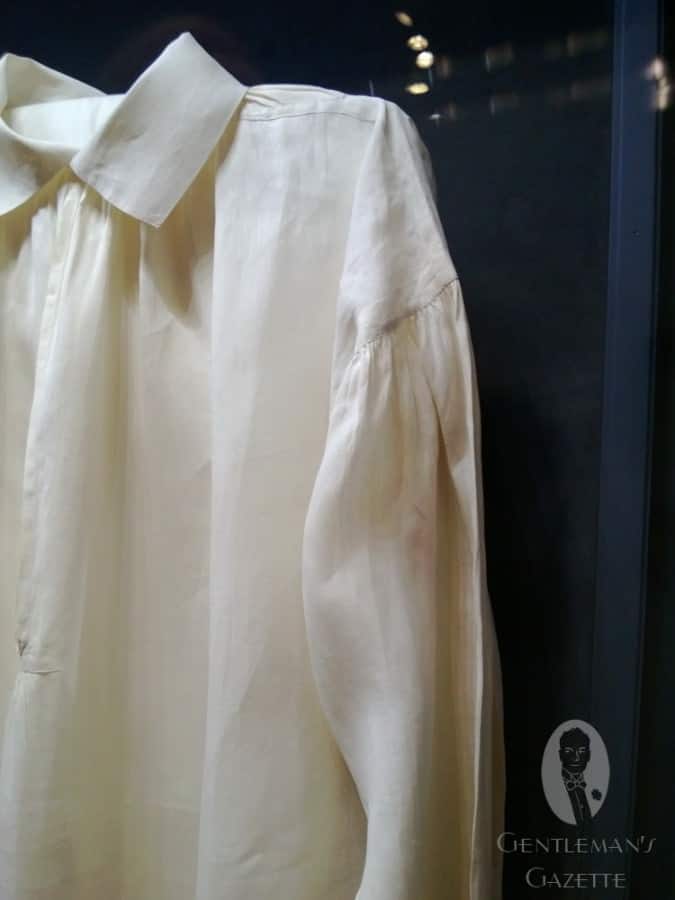
The Purpose of Underwear
Initially, undergarments were not designed to protect the body from the elements nor to add another layer of insulation. Instead, their purpose was to protect the outer layer of garments from touching the body, especially since regular bathing did not become de rigeur until the 18th century. At the same time, undergarments protected the wearer's skin from the scratchy outerwear. This was, of course, primarily true for the rich and noble. The working class was lucky to have a single shirt, as textiles were expensive, laborious and precious goods.

Today, undershirts are used for many reasons:
1. Particularly during the colder months, an undershirt can help to keep you warm.
2. Undershirts protect your dress shirt from sweat and deodorant stains.
3. Performance undershirts are supposed to keep moisture away from your body.
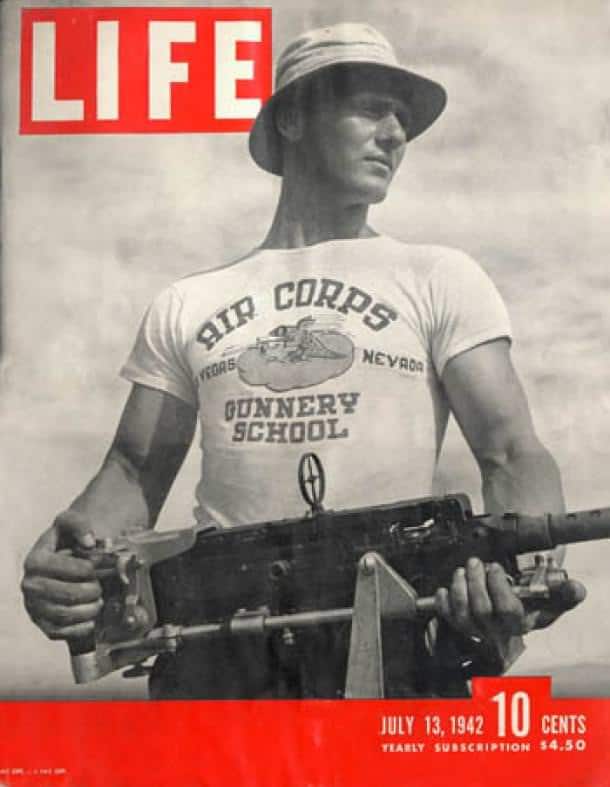
The Undershirt Evolves
By the 15th century, young men of nobility began to wear at least part of their shirts exposed and while there was some criticism, the trend of revealing one's shirt to the public prevailed over time. After a while, even respectable men in society would show more of their decorative shirts, such as revealing collars and cuffs. Up until the end of the 19th century, you'd never see much of a shirt other than the cuffs and collars, which is why detachable collars and cuffs were invented. That way only the visible parts had to be washed consistently. To this point, what we know as a dress shirt today would have been strictly considered an undershirt!
While a gentleman would only wear a shirt without an additional undershirt, the poor working class and peasants would sometimes wear a tunic that later developed into the sleeveless undershirt as we know it today. Usually, it was made of wool or flannel to keep them warm. On the other hand, if a gentleman were too cold, he would wear more overgarments, but he would not add a layer underneath. In the US, the so-called Union Suit was an overall style undergarment that was patented in 1868. Although first worn by women, it was later adapted by men as well, though it was always associated with a blue collar, rural demographic, as opposed to the elegant set.
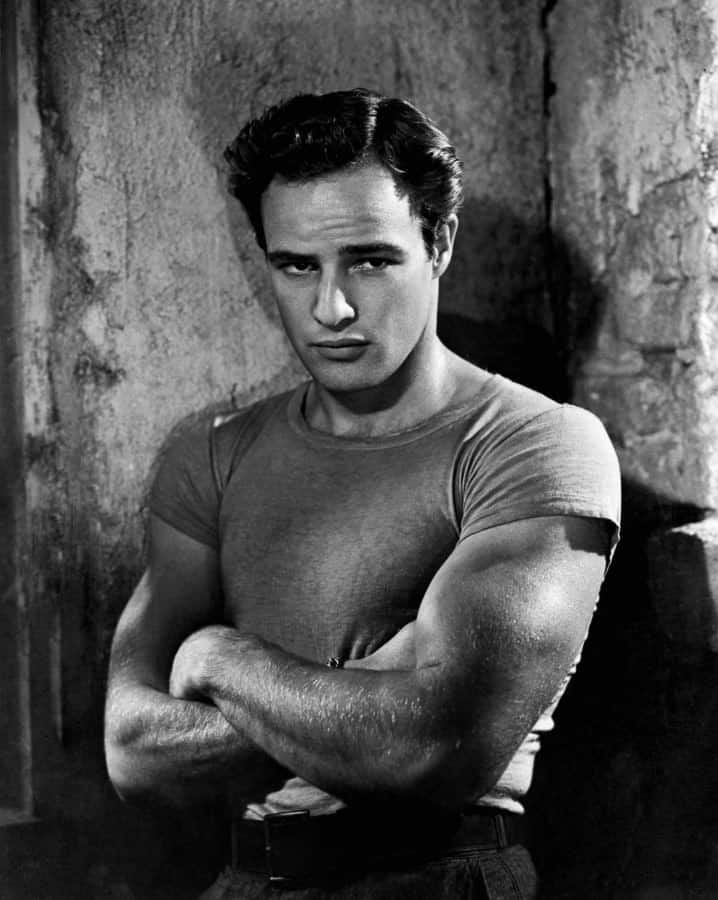
At the beginning of the 20th century, soldiers would often wear undergarments to protect their uniforms from dirt, and in hot climates it was more comfortable to just wear the undershirt. In 1934, the always elegant Clark Gable revealed inIt Happened One Night that he did not wear an undershirt. Legend has it that undershirt sales in the US dropped by 75%. Apparently it took until WWII for sales of undershirts to recover, and then, soldiers wore them on their own as a form of outerwear. While it was considered to be poor taste in the beginning, by the fifties Hollywood stars such as Marlon Brando and James Dean would wear them in public and so the T-Shirt as we know it today became a success.
Should You Wear an Undershirt or Not?
Now, you may wonder whether you should wear an undershirt at all, and I think that depends on several factors. There is no right or wrong answer here and it is simply a matter of personal preference.
Pros:
- If you sweat profusely so that your jackets show it, wearing an undershirt will help you.
- With stiff fronted evening shirts for black tie and white, undershirts can help avoid chafed skin, and it is invisible underneath the bib shirt front.
- If you are always cold and you'd like an extra layer of cloth to stay warmer, an undershirt will help.
- Undershirts can keep ample chest hair from poking through the surface of the shirt.
- Without an undershirt, your dress shirts, will inevitably get deodorant stains. Although you can remove those stains with Deo-Go, it is less convenient than wearing an undershirt.
- Well cut undershirts, are not visible in the collar area even if you wear your top two shirt buttons unbuttoned.
Cons:
- Historically, elegant men did not wear an additional undergarment under their shirts.
- In terms of comfort, not wearing an undershirt should reduce the feeling of constriction that can come with wearing multiple, similarly shaped layers.
- Furthermore, the extra layer of cloth is usually undesirable in the summer, and an undershirt will show clearly through an open-weave shirt regardless of color.
- Cold in the winter? A heavy weight shirt fabric is an excellent alternative to adding an undershirt layer.
- Proponents of undershirts sometimes argue that it is more hygienic to wear undershirts, however, if you shower regularly and wash your dress shirts after they are worn, you should have no problem.
- In my experience, my shirts last for a long time and I have yet to find any evidence that an undershirt will prolong the life of one's dress shirt.
- Many elegant men I know – including Clark Gable, G. Bruce Boyer, Fabio Attanasio and Herbert Stricker – prefer not to wear undershirts underneath their dress shirts but again, this is just their personal preference.
Undershirts DO's & DON'Ts Today
Today, you can find all kinds of undershirts, ranging from the classic sleeveless shirt (sometimes also referred to as a tank top, or if white and ribbed, as a wife beater) all the way to "performance shirts" that make comfort claims. In the following, we'll discuss the details of each style. Two important aspects of all undershirts are their color and their fit.
1. DO Wear an Undershirt, Not A T-Shirt
It is important to highlight that an undershirt is NOT the same as a t-shirt. Since it is meant for layering, an undershirt is generally thinner and more lightweight. Traditionally, undershirts are ribbed because a ribbed shirt can stretch more and is, therefore, more comfortable. So if you want to wear an undershirt, do not use a t-shirt because they are too big, too stiff and too thick to be comfortable underneath a dress shirt.
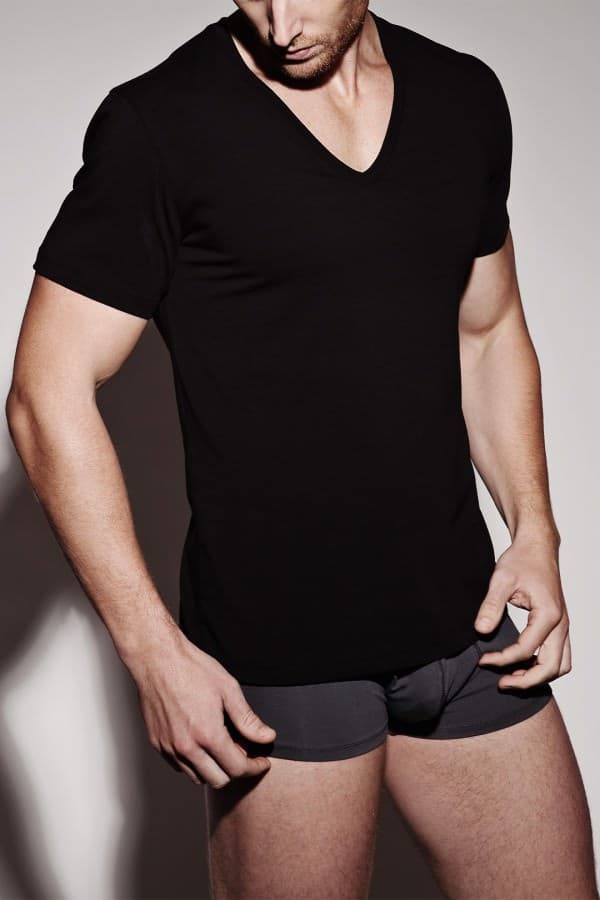
2. DON'T Wear White or Black Undershirts
Forget white. In an ideal world, your undershirt should match the color of your skin or it should be darker such as heather grey so you do not see the outline of the undershirt on top of the shirt. This may seem odd at first but even underneath a white shirt, a skin-colored undershirt will be less visible than a plain white T-shirt, especially in the areas between skin and T-shirt around your biceps and collar. Unfortunately, skin tones vary greatly and so there is no easy way to buy skin-colored shirts. Some offer undershirts in heather gray and they are better than white. However, you can also use a white undershirt and apply an old theater trick
How to make a skin-colored shirt yourself:
- Take a pure cotton undershirt that fits you well. Brew some strong black tea.
- Then put the shirt in the solution in a basin (you don't want to stain your sink), and let it soak for a about 15 minutes.
- Finally, just rinse off the excess, and the shirt will have a color value very similar to that of bare Caucasian skin – and the stain will be relatively permanent. Of course, it goes without saying that you should not bleach the shirt.
- Unfortunately, that only works for a small range of skin tones. In that case, a color close to your actual skin tone is much better than all white or all black if you decide to wear an undershirt.
3. DO Wear Close-Fitting Undershirts
If you decide to wear an undershirt, make sure it fits closely and has small armholes. Otherwise you may feel rather uncomfortable and constricted in your movement. Also, you want it to be long enough, so it doesn't come untucked.
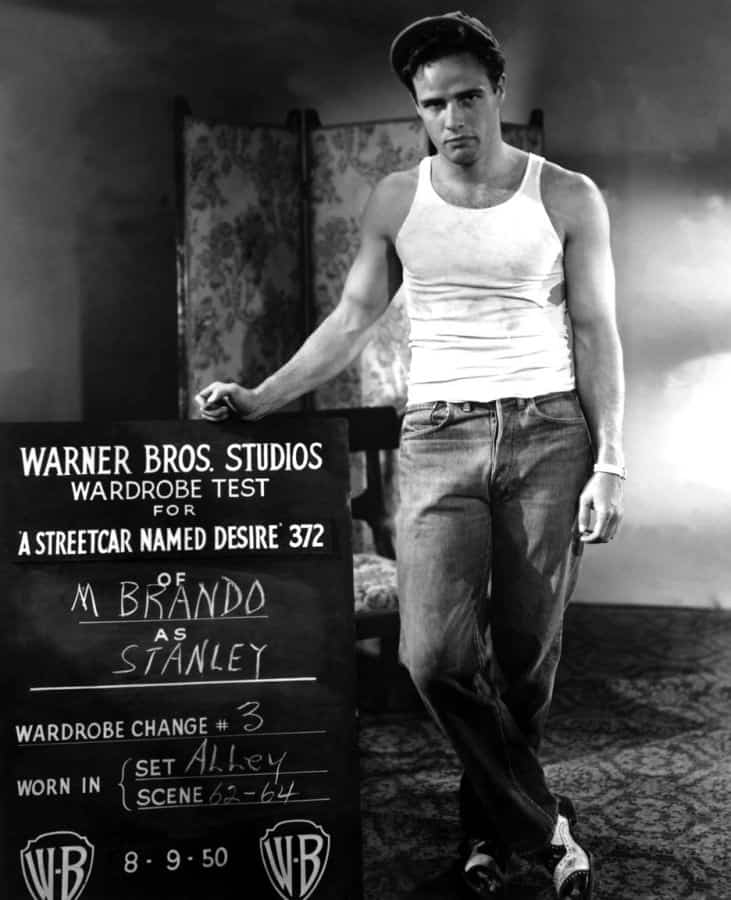
4. DON'T Wear Sleeveless Undershirts
You can get white sleeveless undershirts pretty much anywhere, rather inexpensively. They are usually made out of 100% cotton or cotton/poly blend with a fine ribbed look. Many men still wear them today for work as an undershirt and some even wear them to the gym because they like the increased range of movement. Worn under shirts, you can usually see the outline of it even if you wear a jacket and if you take it off, it becomes even more apparent that you are wearing one. Functionally, if you use undershirts to absorb sweat then this style doesn't work too well because your armpits aren't really covered.
It might be a classic in many men's wardrobes and your grandfather might have worn them religiously, but in terms of style and functionality, it leaves a lot to be desired.
5. DON'T Show Your Undershirt
One of the worst style mistakes you can commit is to show your undershirt when you wear your shirt unbuttoned or when the lines show underneath your dress shirt. If you wear summer shirts with thin fabric, it is impossible not to see the undershirt, whereas winter or flannel shirts will reveal the lines of a well-constructed undershirt.
Avoid Crew Neck Undershirts
The crew neck undershirt has a high neckline that is somewhat visible when you wear your dress shirt buttoned-up, but it looks particularly terrible.
6. Do Wear Deep-Cut V-Neck Undershirts
If you want to wear undershirts, always opt for deep-cut V-neck styles with flat seams, because one can see whether a man wears an undershirt underneath his dress shirt even if it is buttoned all the way, and he has a jacket on. If you take off your jacket, chances are you will show some rings on your upper arm unless the undershirt is extra thin, and close-fitting.
7. Pure Cotton or Blends
Most men who wear undershirts today either go with a classic crew neck or v-neck style. Plain white shirts are available everywhere and even solid-colored versions can be found easily. Just like the sleeveless shirts, they usually come in pure cotton or poly blends, though lately there have been all kinds of cotton blends with spandex, viscose, modal, etc. Usually the goal of these additions is to either make the shirts softer or more durable, but they generally come with a higher price tag.
8. Performance Underwear
In the last few years, many sports outfitters have come up with all kinds of artificial fibers that are designed to transport the moisture away from you body and make you feel dryer. When you are going for a hike, down the slopes or rafting, these are totally fine – but they are really ill-suited as an undershirt for a dress shirt because they often come in patterns, bright colors and always with a contrasting logo that will be visible through your shirt.
What Undershirts to Buy?
Ultimately, it comes down to two things: comfort and look. Personally, I do not wear undershirts during the summer and during the winter only if I know I have to endure cold Minnesota temperatures for a while, but I always wear them with stiff fronted evening shirts to prevent chafing. At the end of the day, it is a personal decision to wear one and over the years, we have tested quite a few undershirts from various brands, and will share our results in a dedicated post
Source: https://www.gentlemansgazette.com/undershirt-guide-to-wear-or-not-to-wear-one/

0 Response to "Do You Need an Undershirt Under a White Dress Shirt"
Postar um comentário